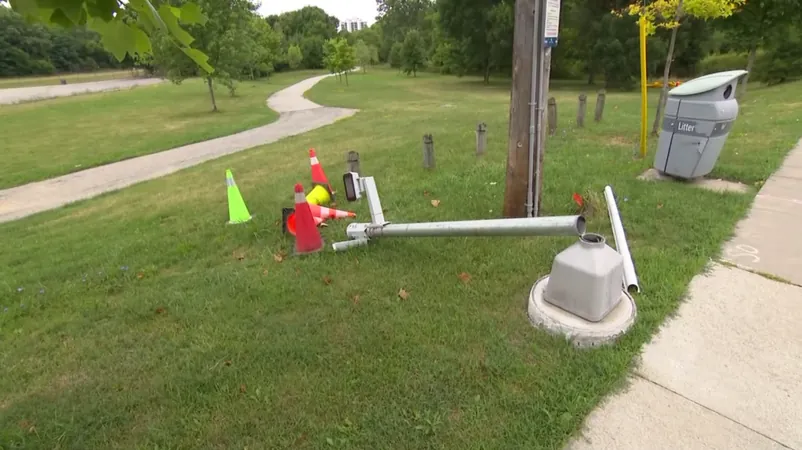
Revolutionizing Reforestation: How Smarter Forest Designs Can Combat Climate Change
2025-07-13
Author: Liam
Engineering the Forests of the Future
While planting trees seems like a straightforward concept, the intricate details—from selecting tree species to their arrangement—play a crucial role in maximizing climate benefits. Recent advancements in computer modeling allow scientists to create virtual forests, experimenting with various layouts long before any seedlings touch the soil.
The Power of Planting Diversity
A groundbreaking study helmed by Rém Beugnon at Germany’s Centre for Integrative Biodiversity Research reveals that how we lay out these trees can significantly influence their growth and ecological impact. The findings underscore that layout is nearly as vital as species selection!
The research highlights the concept of spatial heterogeneity—the diverse mix of species within a tree stand. High levels of this diversity facilitate healthy interactions among trees, enabling them to efficiently share nutrients and light, ultimately enhancing forest productivity.
Random Designs Yield Remarkable Results
Through simulations involving eight subtropical species, Beugnon’s team found that random planting designs outperform tightly organized ones. Their models indicated an impressive 11% increase in aboveground biomass in randomly arranged plots compared to conventional block patterns.
This enhancement arises from the better light absorption and nutrient distribution when shade-tolerant trees coexist with sun-loving varieties—wasting less of the essential resources they need to thrive.
Soil Enrichment Through Litter Dynamics
One of the hidden benefits of mixed-species forests is how they transform leaf litter into a nutrient-rich resource. More diverse canopies help evenly distribute litter across the forest floor, which significantly benefits soil nutrient balance and carbon retention.
In fact, carbon loss from litter increased from 36.5% in block plantings to 47.1% in mixed arrangements after nine months, indicating a substantial change in the forest's carbon ecosystem.
The Ideal Compromise: Line Planting
To combine efficiency with biodiversity, researchers tested a method called line planting, where single or double rows of different species alternate. This layout not only preserves accessible machinery lanes but also promotes a diverse ecosystem by mixing neighboring species.
The simulation results were promising: line layouts decomposed 40.4% of litter carbon in nine months—striking a balance between block and random designs while remaining easy to implement.
Building a Sustainable Forest Future
The study emphasizes that a well-thought-out design is half the battle; adding diverse species amplifies the benefits. With each additional species integrated randomly, the decomposition rate can increase by over ten percentage points compared to block configurations.
A continent-wide survey has also revealed that forests rich in diverse life histories store more carbon over time, illustrating that strategic planning—both in species selection and arrangement—can significantly contribute to national climate targets.
Policy Shifts for Climate Resilience
Looking ahead, Beugnon and his colleagues are set to conduct long-term field tests to assess how mixed layouts withstand environmental challenges over decades. There’s a push for policymakers to incorporate spatial diversity criteria into reforestation incentives, promoting designs that favor mixed species.
With approximately 470 million acres earmarked for global restoration, even a modest 10% increase in biomass translates to enormous quantities of sequestered carbon, providing a crucial tool within the climate change mitigation arsenal.
By prioritizing intelligent forest design from the outset, we can make significant strides toward a healthier planet, ensuring environmental benefits for generations to come.









 Brasil (PT)
Brasil (PT)
 Canada (EN)
Canada (EN)
 Chile (ES)
Chile (ES)
 Česko (CS)
Česko (CS)
 대한민국 (KO)
대한민국 (KO)
 España (ES)
España (ES)
 France (FR)
France (FR)
 Hong Kong (EN)
Hong Kong (EN)
 Italia (IT)
Italia (IT)
 日本 (JA)
日本 (JA)
 Magyarország (HU)
Magyarország (HU)
 Norge (NO)
Norge (NO)
 Polska (PL)
Polska (PL)
 Schweiz (DE)
Schweiz (DE)
 Singapore (EN)
Singapore (EN)
 Sverige (SV)
Sverige (SV)
 Suomi (FI)
Suomi (FI)
 Türkiye (TR)
Türkiye (TR)
 الإمارات العربية المتحدة (AR)
الإمارات العربية المتحدة (AR)